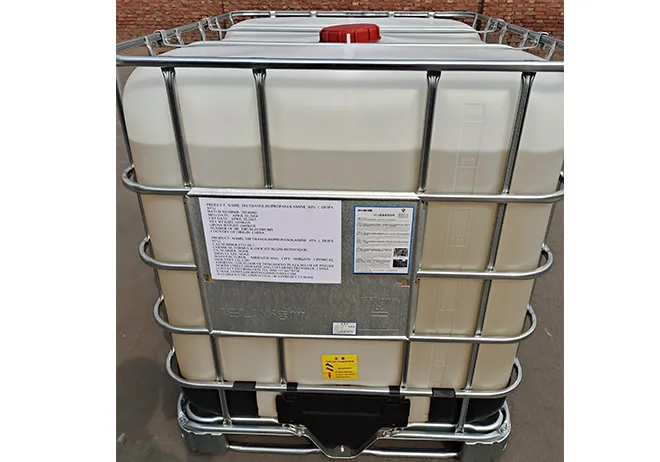
sponge cake emulsifier
The Role of Emulsifiers in Sponge Cake A Comprehensive Overview
Sponge cake is a classic dessert known for its light, airy texture and delightful flavor. The secret behind its unique quality lies not only in the ingredients but also in the use of emulsifiers. Emulsifiers are crucial components that enhance the texture and stability of sponge cakes, making them a staple in both home baking and professional pastry shops.
Understanding Emulsifiers
An emulsifier is a substance that helps mix two or more immiscible liquids, such as oil and water, by reducing the surface tension between them. In the context of baking, emulsifiers play a vital role in stabilizing mixtures that would otherwise separate, ensuring a uniform consistency throughout the cake batter. Common emulsifiers used in baking include lecithin, mono- and diglycerides, and commercial products like DATEM (diacetyl tartaric acid ester of mono- and diglycerides).
How Emulsifiers Impact Sponge Cake
1. Improved Texture One of the primary functions of emulsifiers in sponge cakes is to create a tender crumb. By binding water and fat together, they prevent the formation of large air pockets, resulting in a finer, more uniform texture. This is especially important in sponge cakes, which rely on the incorporation of air during the mixing process to achieve their lightness.
2. Moisture Retention Emulsifiers help sponge cakes retain moisture, extending their shelf life and preventing them from drying out. This is particularly beneficial for commercial bakers who need their products to remain fresh for longer periods. The ability to keep the cake moist enhances not only the flavor but also the overall eating experience.
3. Better Volume When emulsifiers are added to the batter, they facilitate the trapping of air in the mixture. This increased aeration leads to heightened cake volume, which is a key characteristic of a successful sponge cake. The high volume and light texture are what make sponge cakes a favorite among dessert enthusiasts.
sponge cake emulsifier

4. Stability Emulsifiers stabilize the batter, preventing it from breaking or separating during mixing and baking. This stability is crucial when making sponge cakes, as it allows for even baking and prevents uneven textures or collapsed cakes. The result is a beautifully risen cake with a consistent structure throughout.
Types of Emulsifiers and Their Usage
While many home bakers may not use commercial emulsifiers, understanding their types and roles can be beneficial. Lecithin, derived from egg yolks or soybeans, is a natural emulsifier commonly found in baking. It not only aids in emulsification but also adds richness and enhances flavor. Mono- and diglycerides, often found in store-bought cakes, improve texture and extend freshness.
For bakers looking to replicate the effects of commercial emulsifiers, incorporating ingredients like honey or certain fruit purees can provide similar benefits. However, the precise balance of ingredients is essential to achieve the desired result.
Conclusion
In summary, emulsifiers play an indispensable role in the creation of sponge cakes. They enhance texture, retain moisture, improve volume, and provide stability, all of which contribute to the cake's delightful characteristics. Whether you're a home baker experimenting with recipes or a professional pastry chef perfecting your craft, understanding the impact of emulsifiers on sponge cake preparation can lead to remarkable results.
As baking technology continues to evolve, so too will the options for emulsifiers available to bakers. Embracing these innovations will not only improve the quality of your sponge cakes but also inspire creativity in your baking endeavors. So, the next time you whip up a delectable sponge cake, remember that the inclusion of emulsifiers is the key to achieving that perfect rise and tantalizing texture that makes sponge cake a timeless dessert.
-
The Safety Challenges of Ammonium Nitrate FertilizerNewsJun.26,2025
-
The Critical Role of Mining ChemicalsNewsJun.26,2025
-
Shelf Life of Glacial Acetic Acid Food GradeNewsJun.26,2025
-
Enhancing PVC Longevity with 1,2,3-Benzotriazole InnovationsNewsJun.26,2025
-
China’s Dominance in Food Additive ProductionNewsJun.26,2025
-
Can Aluminum Hydroxide Replace More Toxic Alternatives?NewsJun.26,2025
-
PE and PP Plastics with Benzotriazole AdditivesNewsJun.12,2025
Hebei Tenger Chemical Technology Co., Ltd. focuses on the chemical industry and is committed to the export service of chemical raw materials.
-

view more DiethanolisopropanolamineIn the ever-growing field of chemical solutions, diethanolisopropanolamine (DEIPA) stands out as a versatile and important compound. Due to its unique chemical structure and properties, DEIPA is of interest to various industries including construction, personal care, and agriculture. -

view more TriisopropanolamineTriisopropanolamine (TIPA) alkanol amine substance, is a kind of alcohol amine compound with amino and alcohol hydroxyl, and because of its molecules contains both amino and hydroxyl. -

view more Tetramethyl Thiuram DisulfideTetramethyl thiuram disulfide, also known as TMTD, is a white to light-yellow powder with a distinct sulfur-like odor. It is soluble in organic solvents such as benzene, acetone, and ethyl acetate, making it highly versatile for use in different formulations. TMTD is known for its excellent vulcanization acceleration properties, which makes it a key ingredient in the production of rubber products. Additionally, it acts as an effective fungicide and bactericide, making it valuable in agricultural applications. Its high purity and stability ensure consistent performance, making it a preferred choice for manufacturers across various industries.











